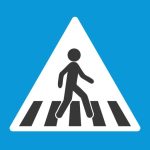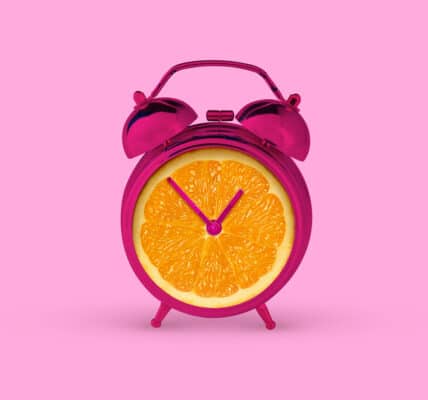Is Addiction Really a Chronic Brain Disease?

We have been following along in Dr. Reinout W. Wiers’ new book, A New Approach to Addiction and Choice: Akrasia and the Nature of Free Will, from Routledge, which is a treatise on the state of addiction science by someone with a sharp mind and a delightful sense of humor.
In our first article, “Akrasia and a New Approach to Addiction Recovery,” we outlined the book and looked at four models of addiction: the Moral Model, the Brain Disease Model, the Genetic Model, and the Behaviorist Model, as well as Dr. Weirs’ preferred hybrid, the Biased-Choice Model. We’ll take a look at the last of these next week. For today, let us consider the Brain Disease Model of Addiction.
A systematic review of addiction neuroimaging in the journal Neuron by Rita Goldstein and a team of neuroscientists and psychiatric researchers at the Icahn School of Medicine at Mt. Sinai in New York found impairments to the following six brain networks impacted in the addiction cycle:
- Reward Network — incentive salience, wanting
- Habit Network — automated behavior
- Salience Network — involving the insula, activated by something important
- Executive Control Network — frontal lobe functions, inhibition, working memory
- Default Mode Network — self-awareness, self-direction
- Memory Network — involving the hippocampus, changing behavior
These observations were similar for alcohol, stimulants, and cannabis. That’s a lot of brain territory to cover. Dr. Wiers hits some of the highlights in his second chapter, “A Chronic Brain Disease?” Wiers guides us through the brain, researcher by researcher, as if assembling a puzzle that, not surprisingly, bears semblance to the interlocking lobes of the brain itself.
First is George F. Koob, Nora Volkow, and the cycle of binge, withdrawal, and anticipation that is the hamster trap of addiction. An important fact I noted is that an expected reward does not bring nearly the dopamine hit of an unexpected reward. “When a reward is unexpected, a strong dopamine peak occurs in the midbrain (mesolimbic) dopamine system, which does not happen if the same reward was already predicted.”
Next is Kent Berridge, who uses optogenetic stimulation to tickle the amygdala of mice in a way that makes them want what they know is bad for them (electric shocks). Similarly, addicted humans find it difficult to abstain from behavior they know is self-harming. This is the definition of akrasia: to engage in behavior one knows is harmful to oneself.
Why can’t they abstain? Terry Robinson says some people are sign-trackers and some people are goal-trackers. Sign-trackers focus on the sizzle and goal-trackers on the steak. Sign-trackers become so hypnotized by cues that they fail to see what it’s costing them. Goal-trackers keep their eyes on the prize and are less likely to be knocked off their plan by distractions.
This ability to be knocked off your plan by distractions was measured through a test called value-modulated attentional capture (VMAC) developed by Mike LePelley and his team at the School of Psychology in Sydney, Australia. A reward signal distracts subjects from completing a task. This work measures sensitivity to reward, with people on the low end being uninterested in reward and prone to depression, and those on the high end being obsessed with reward signals and inclined toward addiction.
On the hamster wheel of addiction, a satisfying hit leads to diminishing returns, so much so that the body starts counterprogramming the high at the first sign one might be coming. The addiction crosses from impulsivity to compulsivity when the mouse is willing to shock itself in order to follow a disappointing addiction routine. Wiers offers this quick assessment trick: “[A]ddiction really becomes problematic once the addictive behavior has become more attractive than sex.”
What happens, as is often the case, when substance use disorder and depression are co-occurrent? Here the book has some good news to deliver. Addiction diminishes the brain’s “reward response to life’s normal rewards,” writes Dr. Wiers, but that normal reward response often returns when substance abuse ends. Therefore, treat the addiction first — the depression might go with it:
Depression is indeed very common in addiction, and fortunately in most cases the depression disappears after successful withdrawal, without further treatment for depression. In clinical practice, this is a good reason to first try to treat the addiction, in the case of a depressed patient with an addiction problem.
That’s one solid piece of advice coming from this intriguing new book. In trying to explain how addiction results in chronic brain disease, scientists seem much like blindfolded people describing an elephant, each focused on their own part. They’re unsure how these six brain networks interact and they’re not allowed to run the kind of tests on humans that might yield the answers. So it’s slow going.
And chronic brain disease is not the only theory of addiction in play. In the next chapter of his book, and the next article in this series, we will look at other theories for the addictive process that question whether addiction is chronic, whether it is in the brain, and whether it is even a disease.
Written by Steve O’Keefe. First published August 29, 2024.
Sources:
A New Approach to Addiction and Choice: Akrasia and the Nature of Free Will, by Reinout W. Wiers, to be published by Routledge in 2025.
“Neuroimaging Impaired Response Inhibition and Salience Attribution in Human Drug Addiction: A Systematic Review,” Neuron, June 2018.
“Persistence of value-modulated attentional capture is associated with risky alcohol use,” Addictive Behaviors Reports, December 2019.
Image Copyright: gelpi.




